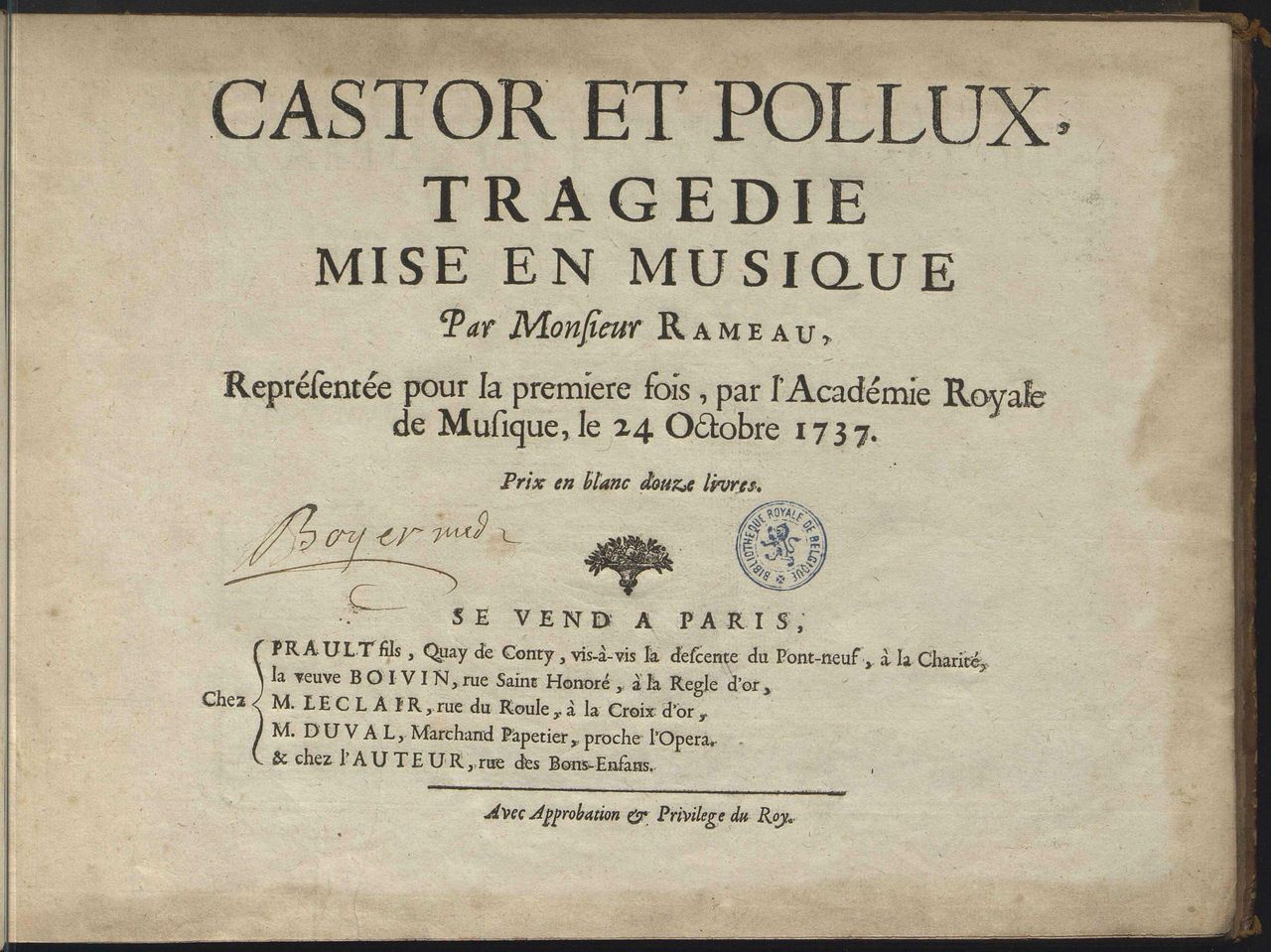
French media proclaimed Rameau ‘the god of harmony’
Nearing the ripe age of 50, Jean-Philippe Rameau, who had served as an organist in provincial cathedrals for most of his life, began writing operas. Rameau’s in-depth understanding and adroit application of harmony characterized his work and shook the denizens of Paris, creating a near insurrection. While many recognized his prowess and visionary acuity, others dismissed his work as ‘a lot of noise.’
Therefore, it is not surprising that Rameau’s third opera, Castor et Pollux, was met with animosity from conservative critics when it debuted in 1737. His work was revolutionary for the time as he tested the limits of tragédie lyrique, exploring various subject matters, displaying deep emotions, and utilizing dissonant harmonies.
In the early 1750s, Parisians were debating and comparing the merits of French opera versus Italian opera; specifically, a new Italian touring company that was the current rage. Rameau revised and unveiled the new Castor et Pollux in 1754, adding three new Italianate ariettes. This 1754 version is also much shorter, eliminating the prologue and featuring a new Act One created to set the story’s background and introduce the love triangle between the twin mythological brothers, which is the driver of the plot. In its new form, the public was united in agreement that the work was a piece of genius. Later, the great French Romantic composer and conductor Louis-Hector Berlioz would contend that the aria in Act One, Tristes apprêts, was “the sublimest conceptions of dramatic music.”
Outside of France, there are few performances of Castor et Pollux, and the majority that are presented reflect the 1754 version. Seraphic Fire will enable their audience to experience the rarely-performed original arrangement from 1737, which many consider to be the more daring of the two compositions.
Seraphic Fire co-founder and artistic director, Patrick Dupre Quigley describes the extensive planning process: “We’re creating our own parts and score for this performance. Deep appreciation goes to our conducting fellow from the University of Miami, P. Wesley Roy, who researched the earliest public editions of this work to create this performance edition for Seraphic Fire. This is a five-act opera with a prologue that we are cutting 40 to minutes.”
Quigley went on to describe what the audience will experience: “We are performing the prologue from the early version; it’s bright and cheery, although it’s unrelated to the story. Instead, it celebrates the end of the War of the Polish Succession, in which France had been involved. Venus, Cupid, and Minerva are able to convince Mars to adopt peace instead of war, and they sing about the glory. The chorus is prominent in this opera and represents a broad spectrum of voices: from demons to mourners to the good spirits of the Elysian Fields. It’s illustrative music that is both homophonic and contrapuntal. His work makes significant technical demands on the performers. Our audience will find that the sound of French music is very different from Italian or English."



